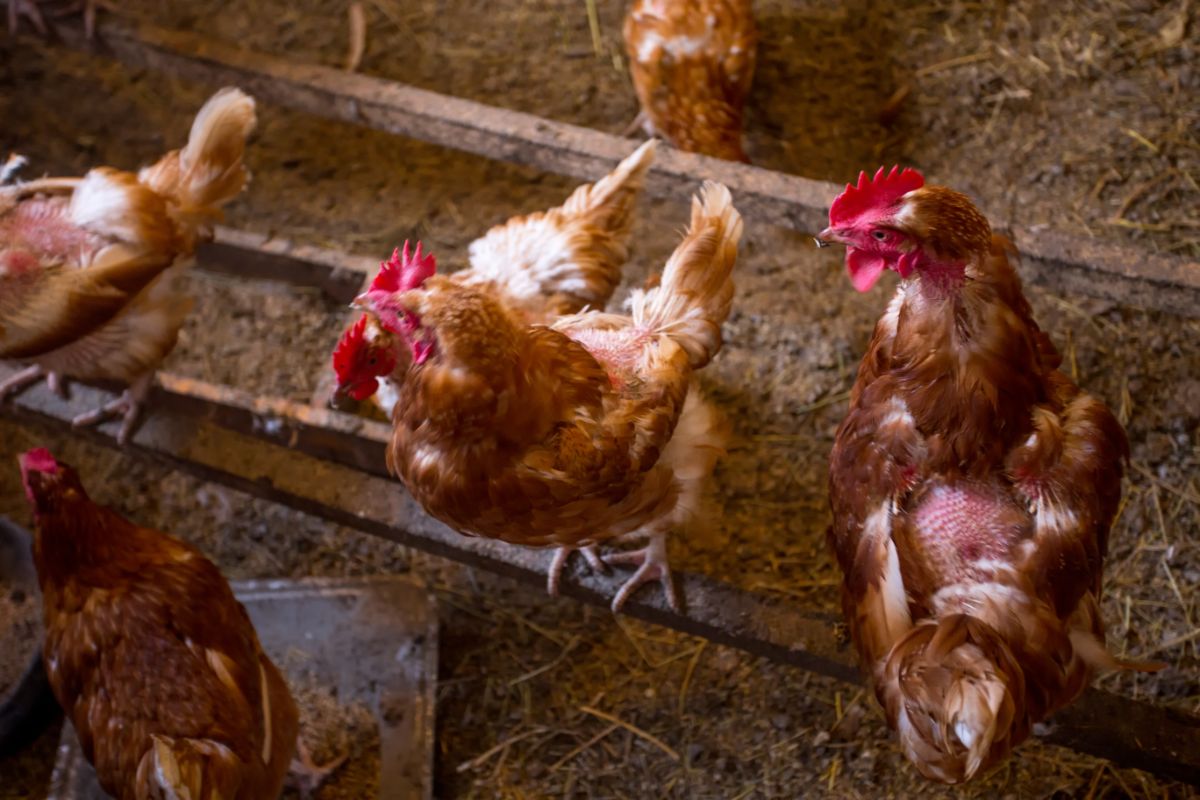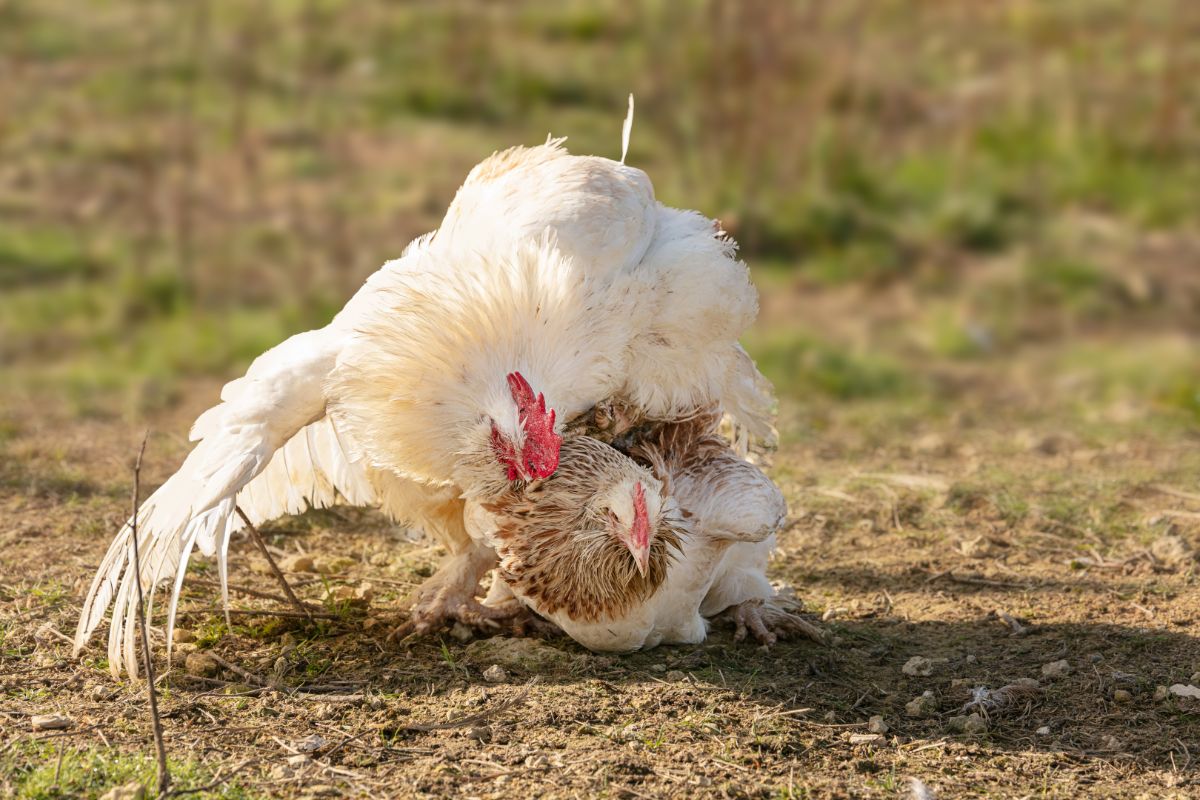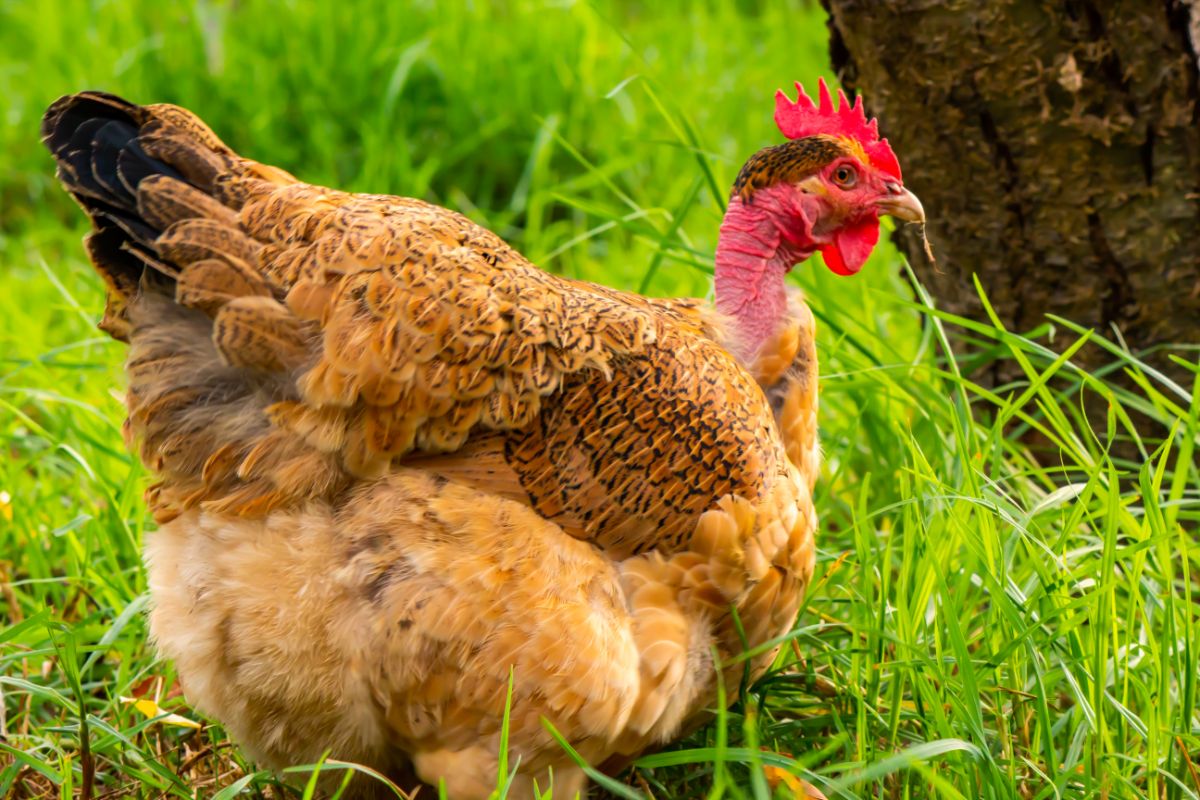
Noticing chickens losing feathers on their back can be an alarming sight.
More often than not, however, you should be able to figure out why your hens are losing feathers on their backs and resolve the issue.
Here are some of the most common reasons why chickens lose feathers, particularly on their backs, and what you can do about it:
Jump to:
Common Reasons Why Chickens Lose Feathers on Their Backs
Molting
One of the most common causes of feather loss in chickens is molting. Adult chickens molt once a year, usually in the fall.
They will lose all of their feathers, but it’s often a patchy process and you’ll notice balding spots like down their backs first.
You should be able to tell if feather loss is due to molting by closely inspecting your chicken for signs of other issues covered below.
Related - More on what molting means to chickens here.
Mating

When roosters mate with hens they grab a hold of a hen’s sides and back with their claws and this can cause feather loss.
In fact, some owners fit their hens with saddles to combat this. A chicken saddle is a piece of material that protects their backs, just like a horse saddle, from damage due to over-mating.
If you have an overactive rooster you might need to address this behavior as it can cause hens a good deal of stress along with feather loss.
Parasites - Lice, Mites, etc
There are various lice, mites, and parasites that can live on the body of a host chicken and one of the more obvious symptoms is feather loss.
You should be able to spot the signs of lice infestations by parting the feathers on your chicken and taking a close look at their skin.
Adult lice are visible to the naked eye, so you may see them moving around. You’re more likely to see red marks and spots though.
Related - Wondering if humans can get chicken lice? Read this.
Poor Nutrition
Chickens require specific nutrients from their diets to maintain optimal health. If a chicken’s diet is lacking nutritional content for any reason, they could experience feather loss.
It’s mainly the protein content in a chicken’s diet you need to be aware of, as feathers are mainly made from protein.
Pullets require a diet rich in protein at about 17%-18%, and laying hens require 16% protein in their diets.
This is easily met by providing your hens with a good quality feed. Age-appropriate chicken feeds are specially formulated with all the nutritional content hens need.
Bullying
Seeing feathers missing from just one place on a chicken, such as their back, may mean that the chicken is being bullied by other hens in the flock.
Chickens form a pecking order that is ranked in terms of dominance within a flock. Unfortunately, the hens that are lowest in the pecking order are often picked on.
This usually means being pecked at, which can be seen by visible damage to combs, missing feathers, and other injuries.
How Do You Tell if Chicken Is Molting or Has Mites?

Both molting and a mite infestation can cause chickens to lose feathers on their backs, but it’s generally easy to tell the difference between these two causes.
When a chicken is starting to molt, they typically start by losing feathers on their heads and necks, and then across their backs and the rest of their bodies.
If you look closely at a molting hen, you should be able to spot new feather growth. These new feathers are called ‘pin feathers’ and they replace the old feathers being shed.
When a chicken has mites, their feather loss will be more concentrated in the places where the infestation is worst.
Hens are usually generally more agitated, and you’ll notice a change in their behavior such as not roosting properly, pecking at themselves, and a dulling or darkening of feathers.
The most telling sign is that you should be able to spot adult lice with your eyes if you take a close look at your chicken's skin.
If you can’t see lice or mites with the naked eye, you should be able to see red spots or scabs where they’re feeding on the hen, and possibly eggs around the vent area.
What Disease Causes Chickens to Lose Feathers?
There are a number of diseases and health issues that are known to cause feather loss in chickens.
Fowl Pox is one of the more well-known diseases that can cause feather loss. As can Marek’s disease, and some other health issues.
If you suspect a health issue - or just want to have it ruled out - you shouldn’t hesitate to have a vet take a look at your chickens for a professional diagnosis.
In Summary
If your chickens are losing feathers on their backs, don’t panic - there might be a simple explanation.
The reason is more than likely going to be due to either; molting, over-mating, parasites, lack of nutrition, bullying, or a health issue.
Once you narrow down the cause or know for sure what’s causing feather loss, you can (hopefully) find a resolution - or simply wait if it’s just their annual molt!





